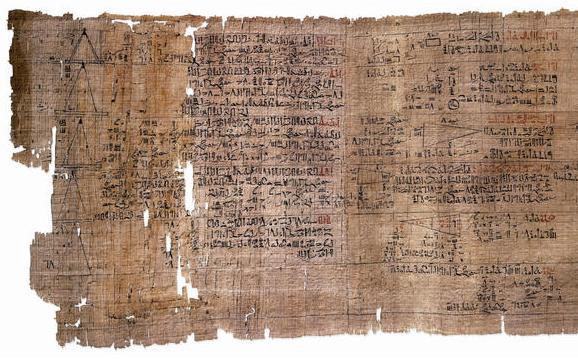Happy Pi Day 2016! Here’s Why You Should Love (and Celebrate) π

Say hi to π. It’s world’s most well known, most controversial number, and it has been baffling and delighting mathematicians for literally thousands of years. As you probably learned in junior high, pi (or π) is the mathematical constant used to show the relationship between the radius of a circle and the circle’s circumference, usually abbreviated to 3.14159. But, pi is both an irrational number (meaning it cannot be represented exactly as a fraction) and a transcendental number (meaning it is not the root of any non-zero polynomial having rational coefficients). The fraction 22/7 is used most often for representing pi as it is accurate to 0.04025%.
The craziest thing – to brains of engineering-minded humans – is that pi is an infinite number, meaning we can never be exactly precise when using it. We just have to use our closest approximation. As a result, the number has taken on an almost mystical importance in modern mathematics, and even in pop culture. Pi is featured as a mystical property both in Carl Sagan’s novel “Contact” (in which it holds hidden messages from the creators of humanity) and in Daron Aronofsky’s
Pi features as a mystical property both in Carl Sagan’s novel “Contact” (in which it holds hidden messages from the creators of humanity) and in Daron Aronofsky’s 1998 psychological thriller, “Pi” (pictured above, whose protagonist loses his mind in the quest for unifying answers about the number).

Archimedes of Syracuse was one of the earliest Western devotees of solving the mysteries of the circle by other means, so much so that he didn’t’ realize the city-state of Syracuse had fallen into Roman hands during the Second Punic War. According to numerous sources of likely apocrypha, a Roman soldier burst in on Archimedes study, to which Archimedes replied in Greek, “Don’t touch my circles!” The Roman soldier didn’t speak Greek, and promptly lopped off his head.

A close approximation of pi is found in the Bible, and even the Great Pyramids at Giza seem to encapsulate the number (the height of the pyramid has the same ratio to the perimeter of its base as the radius of a circle would have to its circumference). Around 2000 B.C., Babylonians established the constant circle ratio as 3.125, while ancient Egyptians calculated a slightly more accurate value of 3 1/7 or 3.143. Our earliest written record of pi dates back to the 1650 BCE handiwork of the Egyptian scribe,
Around 2000 B.C., Babylonians established the constant circle ratio as 3.125, while ancient Egyptians calculated a slightly more accurate value of 3 1/7 or 3.143. Our earliest written record of pi dates back to the 1650 BCE handiwork of the Egyptian scribe, Ahmes, in what is now known as the Rhind Mathematical Papyrus. He was off by less than 1% of the modern approximation of pi (3.141592).*

Squaring the circle, a modern day idiom for a problem that’s impossible to reconcile, is another method developed to understand pi. It dates back to antiquity, but was attempted by later scholars such as Leonardo da Vinci. John Donne even condemned the pursuit in a poem, writing:
“Eternal God—for whom who ever dare / Seek new expressions, do the circle square, / And thrust into straight corners of poor wit / Thee, who art cornerless and infinite—”

Our current moniker for pi is the Greek letter π (the first letter in the Greek word for “perimeter” or “periphery”), which has only been around for about 250 to 300 years. It was first coined by the Welsh mathematician William Jones and truly popularized in 1736 by Leonhard Euler (seen above appearing to wear a plastic tablecloth on both his head and body).
The act of calculating pi is a standard stress test of sorts for any computing device, somewhat akin to a “digital cardiogram.” A good computer shouldn’t find this too difficult, although I will point out that in the Star Trek episode “Wolf In The Fold,” Spock destroys the malevolent rogue element that has overtaken the Enterprise’s computer by asking it to calculate the final digit of pi.
![credit: Tofugu [https://www.tofugu.com/japan/akira-haraguchi/]](https://assets.manmadediy.com/photos/28235/akira_haraguchi_pi_chalkboard_large.jpg?1457924213)
The current world record for most memorized digits of pi keeps changing hands, although the unofficial champion is Akira Haraguchi, a retired Japanese engineer and previous world record holder (83,431 digits) who uses the kana method to memorize everything.Haraguchi documented himself publicly recited 100,000 digits of pi, although Guinness World Records has yet to authenticate his recitation. He regards his memorization as a spiritual act in the quest for eternal truth, and on Pi Day 2015, claimed that he could recite as many as 111,700 digits.
Haraguchi documented himself publicly reciting 100,000 digits of pi, although Guinness World Records has yet to authenticate his recitation. He regards his memorization as a spiritual act in the quest for eternal truth, and on Pi Day 2015, claimed that he could recite as many as 111,700 digits.
Pi is used in the modern era in a number of surprising ways. Electrical engineers use pi to calculate waveforms for alternating-current electricity, statisticians use it to track population dynamics and predict the number of deaths in a given population, biochemists use pi to understand crucial elements of the DNA double-helix. Pi features in GPS navigational systems, pendulum clock design, and in the expanding ripples formed in a liquid body from a drop of water. Speaking of bodies of water, Albert Einstein pointed out that
Pi features in GPS navigational systems, pendulum clock design, and in the expanding ripples formed in a liquid body from a drop of water. Speaking of bodies of water, Albert Einstein pointed out that there seems to be a ratio between the length of a river and its distance as the crow flies from source to mouth. That ratio? Pi.
So, although π Day is obviously a little contrived, when it comes right down to it, it’s every bit as relevant (and probably more so) as some more commonly celebrated holidays. So get out there today and revel in ratio, have a little fun, eat a little pie, or something else circular, like a donut, or a hamburger! Whatever you do, just remember to do it exactly 3.14159265359…. times.
What’s your special way to celebrate π Day? Let me know in the comments!









